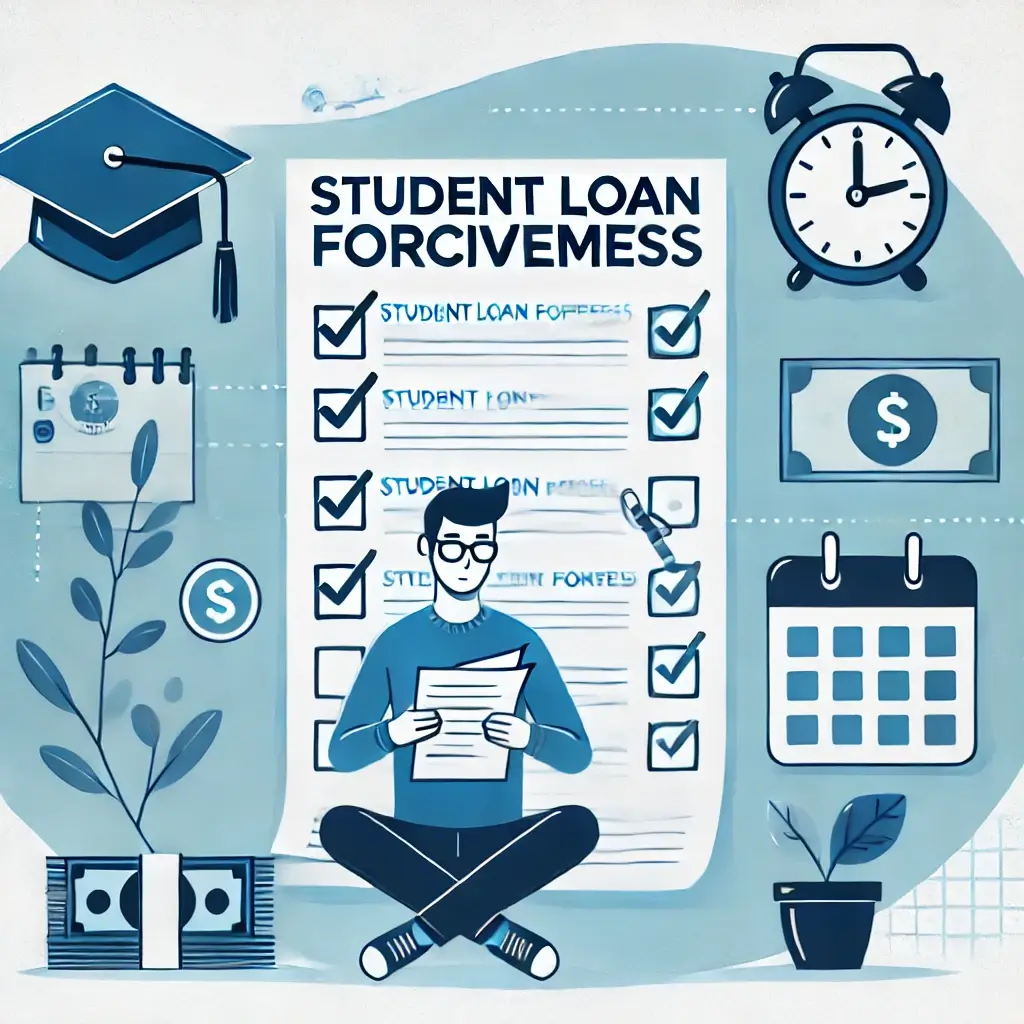For many borrowers, the hope of student loan forgiveness offers a light at the end of the repayment tunnel. However, understanding When Will Student Loans Be Forgiven depends on various factors, including the type of loan, the repayment plan, and eligibility for forgiveness programs. This guide will help you explore the different forgiveness options, timelines, and eligibility requirements so you can better understand when, and if, your student loans may be forgiven.
1. Types of Student Loan Forgiveness Programs
Student loan forgiveness programs are primarily available for federal loans and offer partial or full loan cancellation based on specific criteria. Let’s dive into the major programs that offer forgiveness.
1.1 Public Service Loan Forgiveness (PSLF)
Public Service Loan Forgiveness (PSLF) is one of the most well-known forgiveness programs. It’s available to borrowers who work full-time for a government or qualifying nonprofit organization. Here’s how it works:
- Eligibility: To qualify, you must make 120 qualifying monthly payments under a qualifying repayment plan while working full-time for a qualifying employer.
- Timeline: After making 120 qualifying payments (roughly 10 years), the remaining balance on your Direct Loans will be forgiven.
- Repayment Plan: Payments must be made under an income-driven repayment (IDR) plan to count toward PSLF.
1.2 Teacher Loan Forgiveness
Teachers who work in low-income schools or educational service agencies may be eligible for Teacher Loan Forgiveness, which provides up to $17,500 in loan forgiveness for qualifying educators.
- Eligibility: You must teach full-time for five consecutive years in a low-income school.
- Timeline: After five years of service, teachers can qualify for forgiveness.
- Loan Types: Direct Subsidized and Unsubsidized Loans, and in some cases, Stafford Loans.
1.3 Income-Driven Repayment (IDR) Forgiveness
Borrowers enrolled in an Income-Driven Repayment (IDR) Plan may be eligible for forgiveness after making payments for 20 or 25 years, depending on the plan.
- Eligibility: Borrowers must be on an IDR plan, such as Income-Based Repayment (IBR), Pay As You Earn (PAYE), or Revised Pay As You Earn (REPAYE).
- Timeline: After making payments for 20 or 25 years, any remaining balance will be forgiven.
- Repayment Plans: The specific length of repayment and the amount forgiven depend on the plan and loan balance.
1.4 Other Forgiveness Programs
There are additional federal and state-specific forgiveness programs, such as Perkins Loan Cancellation and State-Based Forgiveness Programs, which forgive loans for public service in areas such as health care, law enforcement, and more.
2. How to Qualify for Loan Forgiveness
Understanding the process and requirements is key to ensuring you qualify for forgiveness. Here’s what you need to do:
2.1 Choose the Right Repayment Plan
For most federal loan forgiveness programs, payments made under an income-driven repayment plan are required. These plans calculate monthly payments based on your income, which can make repayment more manageable while also helping you qualify for forgiveness programs.
- Best Plans for Forgiveness: Income-Based Repayment (IBR), Pay As You Earn (PAYE), Revised Pay As You Earn (REPAYE), Income-Contingent Repayment (ICR).
2.2 Make Qualifying Payments
For programs like PSLF, only qualifying payments made on Direct Loans count toward forgiveness. Qualifying payments are those made on time, in full, and under a qualifying repayment plan.
- Tip: Set up automatic payments to ensure your payments are on time and count toward forgiveness.
2.3 Work in a Qualifying Field
Some forgiveness programs, such as PSLF and Teacher Loan Forgiveness, require that you work in a specific field or for a qualifying employer. Be sure to verify that your employer meets the eligibility criteria before counting on forgiveness.

3. Will Student Loan Forgiveness Happen Automatically?
Student loan forgiveness does not happen automatically. Borrowers need to take active steps to apply for forgiveness and ensure they meet all requirements. Here’s what you need to know:
3.1 Public Service Loan Forgiveness Application
To receive PSLF, you must submit the PSLF Application for Forgiveness after making 120 qualifying payments. Additionally, you should complete an Employment Certification Form (ECF) annually to confirm that your employment and payments qualify.
3.2 Teacher Loan Forgiveness Application
For Teacher Loan Forgiveness, you’ll need to apply once you have completed the required five years of teaching service. Your school must certify that you meet the eligibility requirements.
3.3 IDR Forgiveness
With income-driven repayment forgiveness, the forgiveness process is initiated after you complete the required number of years in repayment. You will need to certify your income and family size each year to remain eligible.
4. The Timeline for Student Loan Forgiveness
The length of time it takes to receive student loan forgiveness depends on the program and the type of loan. Here’s a breakdown of forgiveness timelines for different programs:
4.1 10-Year Timeline for PSLF
Public Service Loan Forgiveness takes 10 years to achieve, but only after you’ve made 120 qualifying monthly payments while working full-time for a qualifying employer.
4.2 5-Year Timeline for Teacher Loan Forgiveness
Teachers working in eligible schools can qualify for loan forgiveness after five consecutive years of service.
4.3 20 to 25 Years for IDR Forgiveness
Income-driven repayment forgiveness occurs after 20 years for undergraduate loans or 25 years for graduate loans, depending on the repayment plan. After making payments for the required term, any remaining balance is forgiven.
5. Will There Be Any New Loan Forgiveness Programs?
With growing calls for widespread loan cancellation, there has been significant debate about new loan forgiveness programs. While some proposals have been made, no broad-based forgiveness program has been enacted. Keep an eye on government announcements and policy changes that could impact student loan forgiveness in the future.
6. The Impact of Loan Forgiveness on Your Finances
Loan forgiveness can have a significant impact on your finances, but it’s essential to understand how it works and any potential tax implications.
6.1 Forgiveness and Taxes
Loan forgiveness under PSLF is tax-free, but forgiveness under some income-driven repayment plans may be considered taxable income. Be sure to consult a tax professional to understand how forgiven debt may affect your taxes.
6.2 Financial Relief
Receiving student loan forgiveness can provide tremendous financial relief. It reduces your overall debt burden and allows you to focus on other financial goals, such as saving for retirement, buying a home, or building an emergency fund.
7. Frequently Asked Questions About Student Loan Forgiveness
7.1 Can Private Student Loans Be Forgiven?
No, private student loans are not eligible for federal forgiveness programs. Private lenders may offer some relief options, such as forbearance or refinancing, but forgiveness is not typically available for private loans.
7.2 What Happens If I Don’t Qualify for Forgiveness?
If you don’t qualify for student loan forgiveness, you’ll need to continue repaying your loans based on the terms of your repayment plan. You may also consider refinancing to lower your interest rate and reduce monthly payments.
7.3 How Can I Track My Progress Toward Forgiveness?
For PSLF, you can submit an Employment Certification Form annually to verify your qualifying payments and employment status. Your loan servicer will track your progress and provide updates.
Conclusion
Understanding When Will Student Loans Be Forgiven depends on your eligibility, the type of forgiveness program, and your specific repayment plan. Whether you’re aiming for Public Service Loan Forgiveness, Teacher Loan Forgiveness, or Income-Driven Repayment forgiveness, knowing the requirements and timelines is crucial. By staying informed and proactive, you can take advantage of the available forgiveness options and alleviate the burden of student loan debt over time.
